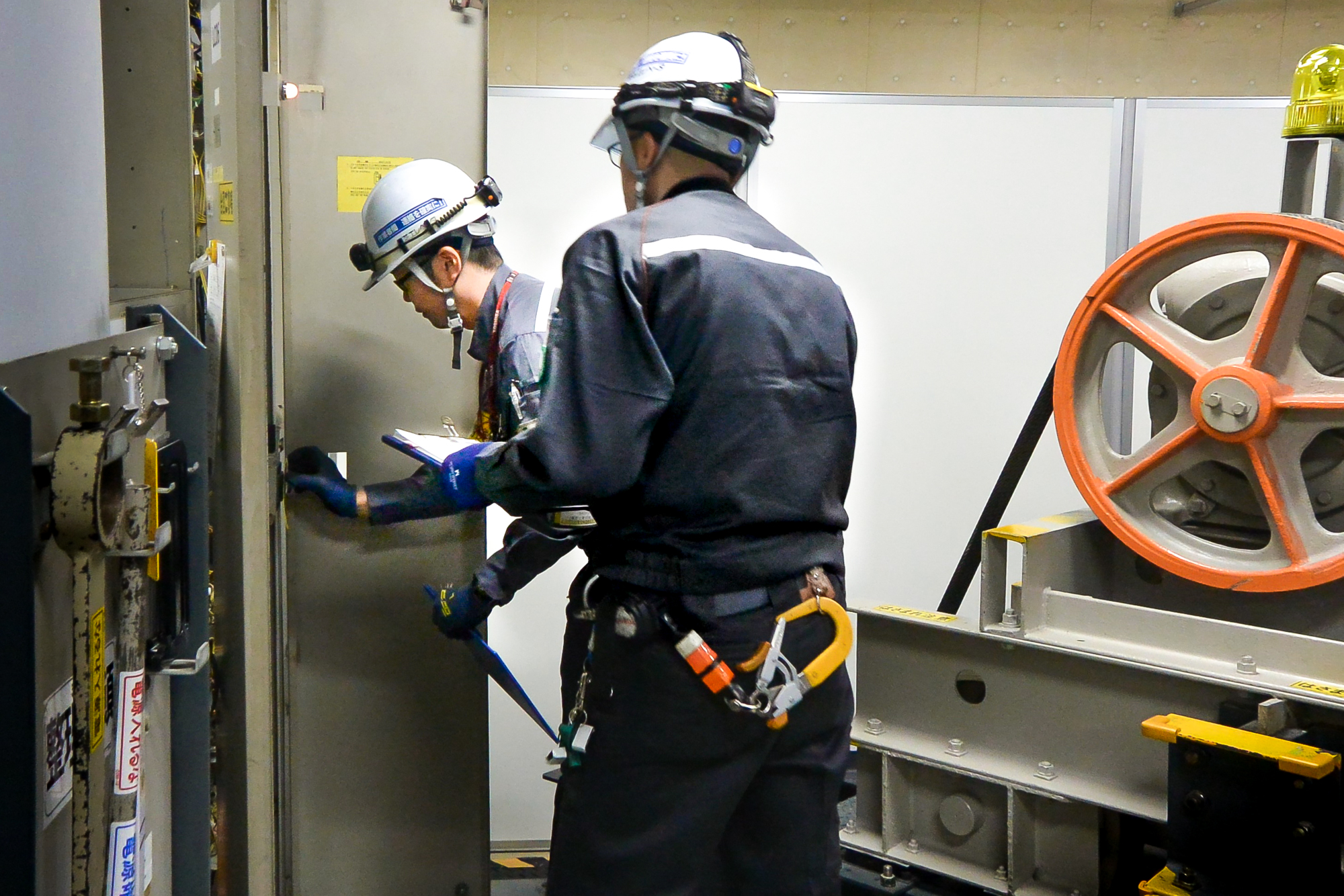Why You Required a Knowledgeable Lift Engineer for Optimal System Efficiency
Why You Required a Knowledgeable Lift Engineer for Optimal System Efficiency
Blog Article
Exploring the Essential Elements of Elevator Upkeep Practices
From regular inspections to implementing precautionary maintenance procedures, every facet of maintenance contributes to the overall efficiency and durability of elevator systems. By exploring these nuances, a deeper understanding of elevator maintenance practices can be acquired, dropping light on the ins and outs that make a substantial distinction in lift efficiency and safety and security.
Value of Normal Examinations
Normal examinations are an essential element of lift upkeep, ensuring the safety and security and effectiveness of the system. These regular checks are essential in recognizing prospective concerns prior to they rise right into significant problems, therefore avoiding costly repair work and downtimes. Throughout examinations, educated professionals diligently analyze various components such as wires, wheels, electric motors, and security attributes to ensure they are operating appropriately. By adhering to a routine inspection routine, structure owners and facility supervisors can assure that their elevators satisfy all safety and security policies and requirements. Positive upkeep via regular inspections can prolong the life expectancy of the lift devices, ultimately conserving on replacement expenses in the lengthy run. Furthermore, these assessments play an essential duty in boosting the overall traveler experience by minimizing the incident of unanticipated failures or disruptions in solution. Finally, regular examinations are not simply an upkeep task however an aggressive step to maintain lift safety and security, longevity, and integrity.

Preventive Maintenance Procedures
Building on the structure of regular examinations for elevator upkeep, precautionary upkeep steps function as aggressive techniques to further improve the reliability and durability of lift systems. These steps entail scheduled jobs focused on avoiding possible issues prior to they escalate right into costly issues or create downtime. Key components of preventative maintenance for elevators consist of lubricating relocating components, changing door devices, testing safety features, and checking electric systems. By sticking to a structured precautionary upkeep schedule, building owners and facility supervisors can decrease the risk of unforeseen break downs, lower repair costs, and make sure guest security.
On a regular basis replacing worn-out components, such as cables, pulley-blocks, and control systems, is likewise vital in precautionary maintenance to mitigate the risk of breakdowns. lift maintenance. Additionally, conducting comprehensive performance assessments and maintaining detailed maintenance records can help identify patterns of wear and potential locations for renovation. Carrying out these preventative maintenance steps not only enhances the overall effectiveness of lift systems yet also contributes to a more secure and much more trustworthy upright transportation experience for constructing occupants
Role of Educated Specialists

Moreover, qualified professionals are geared up to handle emergency situations without delay and effectively - lift maintenance. In case of a breakdown or entrapment, their knowledge enables them to troubleshoot problems properly, decreasing downtime and restoring lift capability promptly. Furthermore, these specialists stay updated on industry standards and technical innovations, permitting them to apply the most recent upkeep methods and guarantee compliance with safety regulations
Enhancing Efficiency With Maintenance
Trained service technicians' proficiency in lift upkeep not just guarantees safety and security and optimum efficiency but additionally serves as a cornerstone for enhancing overall system performance via thorough upkeep methods. With routine inspections, lubrication of moving components, and changes to make sure placement, specialists can adjust the lift system for peak efficiency.
Additionally, aggressive view it upkeep steps can extend the life-span of elevator components, lowering the requirement for premature substitutes. Generally, prioritizing upkeep not just increases lift efficiency but also boosts security, integrity, and total complete satisfaction for building owners.

Longevity of Lift Solutions
Sustaining the long life of lift systems requires a strategic mix of proactive upkeep methods and adherence to industry criteria. Elevators are complex systems that undertake considerable damage because of continuous use. To ensure their longevity, routine inspections, lubrication of relocating parts, and prompt replacements of damaged components are necessary. Executing a preventative maintenance timetable can help recognize potential problems prior to they escalate, hence extending the life expectancy of the lift system.
Additionally, conformity with industry policies and requirements is critical for the reliable and secure operation of elevators. Complying with standards established by companies such as the American Culture of Mechanical Engineers (ASME) guarantees that maintenance jobs are executed correctly and that safety procedures are promoted. Failing to comply with these standards not only endangers the long life of the lift system however additionally postures considerable risks to the residents.
Conclusion
Finally, the crucial elements of lift upkeep techniques consist of normal examinations, preventative upkeep actions, the duty of experienced technicians, boosting efficiency via upkeep, and making sure the long life of lift systems. By adhering to these practices, structure owners can make certain the safety and security, integrity, and effectiveness of their elevator systems, ultimately decreasing the risk of pricey repair services and downtime. Preserving elevators in optimal problem is vital for the wellness of residents and the smooth procedure of structures.
By checking out these nuances, a much deeper understanding of lift maintenance techniques can be obtained, dropping light on the additional hints intricacies that make a substantial distinction in elevator efficiency and safety.
Normal examinations are a vital element of elevator upkeep, guaranteeing the safety and effectiveness of the system.Building on the structure of regular lift engineer examinations for elevator upkeep, preventive upkeep steps offer as positive strategies to additionally enhance the dependability and longevity of elevator systems.Educated specialists' knowledge in lift maintenance not just guarantees safety and security and optimal efficiency however additionally serves as a keystone for enhancing general system efficiency through careful maintenance techniques.In verdict, the vital facets of elevator maintenance techniques include routine examinations, precautionary upkeep measures, the duty of trained service technicians, enhancing efficiency via upkeep, and making certain the long life of elevator systems.
Report this page